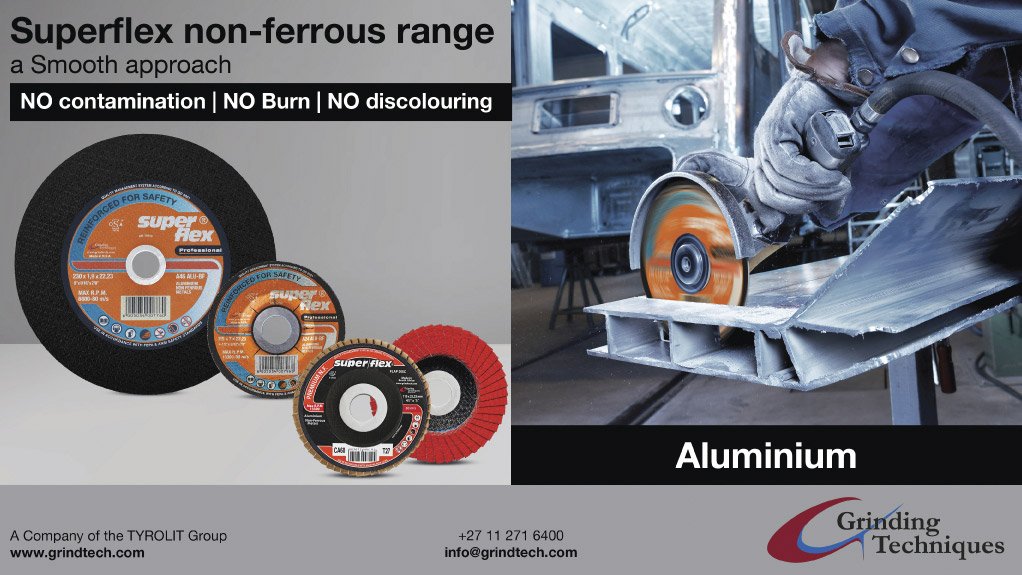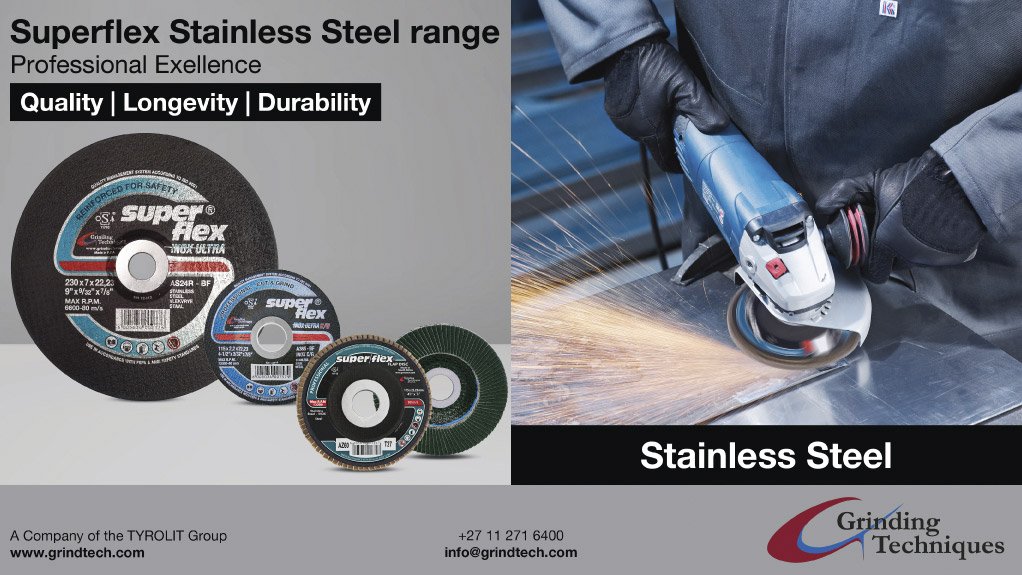/ MEDIA STATEMENT / This content is not written by Creamer Media, but is a supplied media statement.
Identifying and using the correct abrasive product, whether it be for cutting, grinding or blending, is core to the successful completion of any job. Besides the safety risk involved when using incorrect products and the potential harm this may cause, the effect on production lead times and final finish of parts or items being manufactured should also be considered.
Material contamination like oxidation and rust, is a major cause of component and weld failure and occur either through – direct contamination when using the incorrect abrasive products, cross contamination when using the same abrasives on multiple materials; or general contamination due to improper processing of the materials in the work environment.
A common misconception is that Stainless Steel cannot rust. The same is often true for Aluminium. While the actual oxidation process is different to “normal” steels, these metals can still oxidise (rust) if not handled and processed correctly. With Stainless Steels, normal oxidation creates a thin barrier or film like layer on the surface, called chromium oxide. Unlike mild steel rusting, the chromium oxide layer sticks to the metal, thereby protecting it. If this layer is stripped off, the metal will rust. High quality grade stainless steel, with a higher chromium content will have better protection from this unwanted oxidation.
Direct contamination occurs when conventional cutting and grinding discs for steel are used for applications on Stainless Steel or Aluminum. Abrasive cutting and grinding discs, as well as coated abrasive flap discs, are designed and manufactured with various components that make up the final product. Some of these components like fiber reinforcing, are added to provide structure and support to the final product for strength and support to avoid breakage and damages when in use. Together with these components, other additives are also added into the mix to provide better results, usually by increasing the oxidative and corrosive effect in mild or carbon steels. However, such oxidative and corrosive compounds (iron, sulphur and chlorine) can cause major issues down the production line when used on Stainless Steel or Aluminium applications. If the work piece is not thoroughly cleaned of these compounds, should it become contaminated, subsequent welding processes will also be influenced and might cause welds not penetrating well, or porosity that will lead to weak welds that can cause catastrophic failures if not resolved
To avoid cross contamination, care should be taken to avoid using abrasive products on mild or carbon steel, and then on Stainless Steel or Aluminium. Even though abrasive products are manufactured to be free of contaminants, unwanted iron, sulphur and chlorine compounds will be introduced when used on mild or carbon steel, which will be transferred to Stainless Steel or Aluminum upon contact.
Grinding Techniques locally manufactures specialised abrasive products free of contaminants which are perfectly suited to applications on Stainless Steel, like the Superflex INOX Ultra and the Premium Aluminum range, specifically manufactured for use on Aluminum.
With our Superflex range, you can easily select a dedicated product suitable for various materials to avoid cross contamination. Where this is not possible and only a limited product range is used, care should be taken to keep the products quarantined from the other materials. If a disc or wheel has been used on one material, it should be marked as such or stored in a manner that operators will know not to transfer it to another material.
It needs to be noted that general workspace contamination can also contribute to contamination of various materials. Ideally, a floor layout should be planned in such a way that different material types are processed at opposite ends of a factory. This will ensure (to an extent) that swarf created during cutting, blending or grinding operations will not come into contact with Stainless Steel or Aluminum materials in the vicinity, thereby eliminating the possibility of contaminating materials.
Grinding Techniques provides a solution driven service through its national network of branches, with a technical sales force geared to provide the best possible product solutions to optimize your production.
Edited by: Creamer Media Reporter
EMAIL THIS ARTICLE SAVE THIS ARTICLE
ARTICLE ENQUIRY
To subscribe email subscriptions@creamermedia.co.za or click here
To advertise email advertising@creamermedia.co.za or click here















